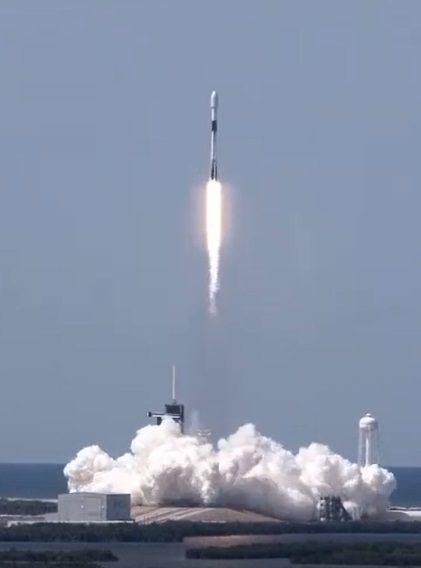A SpaceX Falcon 9v1.2 Block 5 launch vehicle carried 60 Starlink satellites for SpaceX’s low Earth orbit constellation into orbit from Cape Canaveral, Florida, at 1930 GMT on 22 April. This brings the total number of Starlink satellites in orbit to 422. The satellites were placed in an initial parking orbit but will be raised later using their own propulsion systems to the official operational orbit at 550 km.
SpaceX originally planned to operate some of its satellites at a higher altitude but has now made a request to the Federal Communications Commission (FCC) to change this to a new range of 540-570 km for another 2,800 of its Ka- and Ku-band Starlink communications satellites, adding to the 1,600 it already has permission for.
The reused Falcon 9’s first stage B1051, which was on its fourth flight, landed almost nine minutes after lift-off on the drone ship Of Course I Still Love You in the Atlantic, down range of the launch site. Due to upgrades to the recovery ships, there was no attempt to capture the payload fairings in flight, and they splashed down into the sea for later recovery. The fairings were also being reused, having been originally launched in August for the Amos-17.







